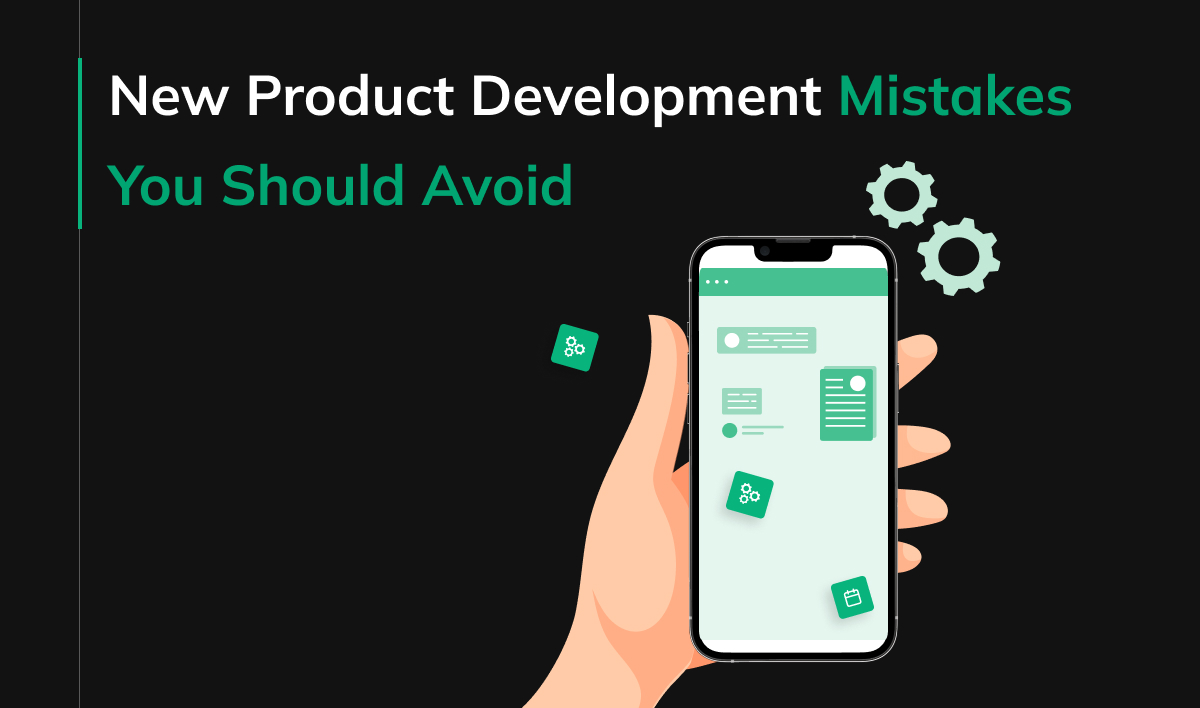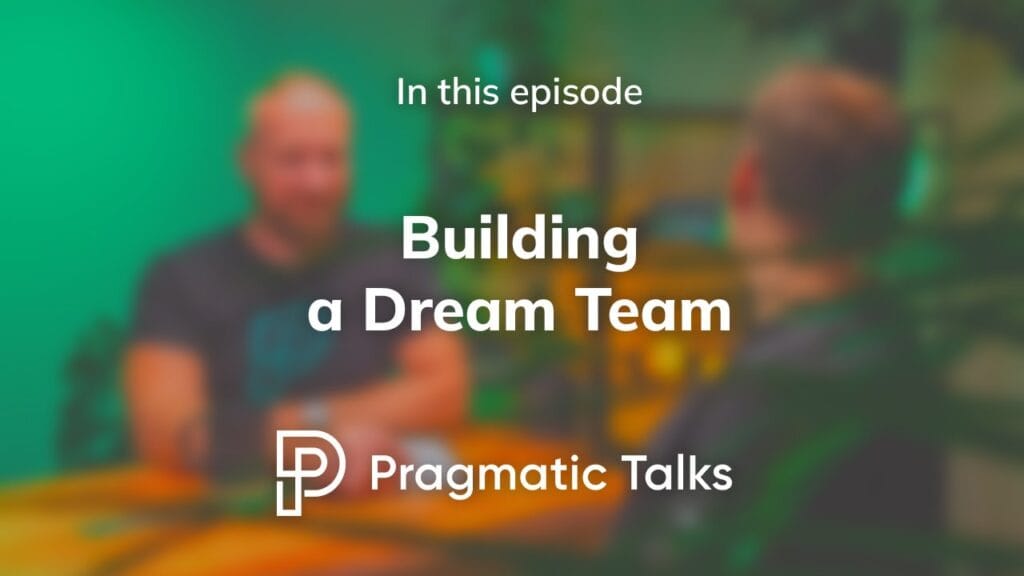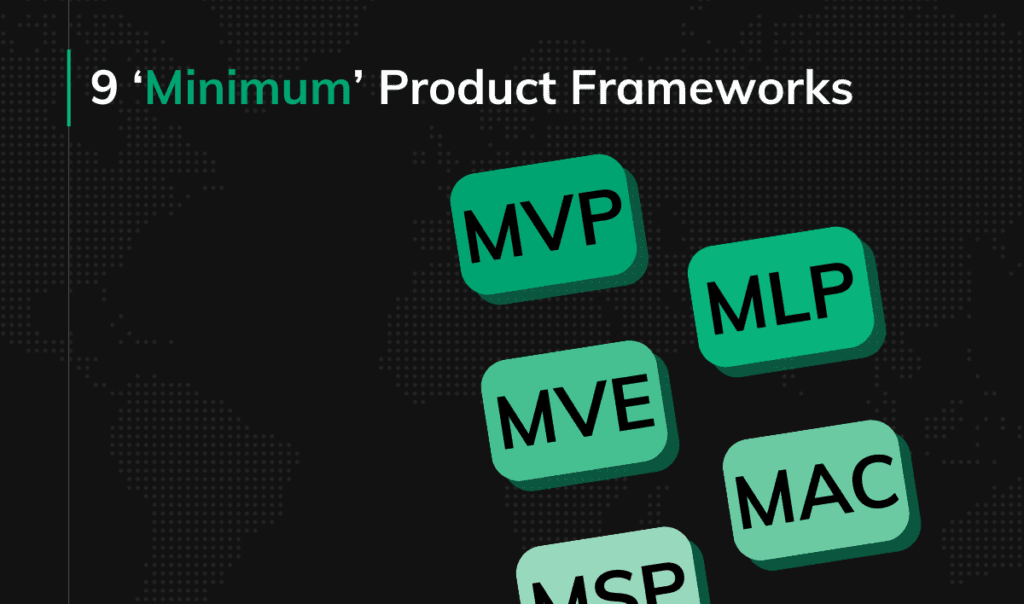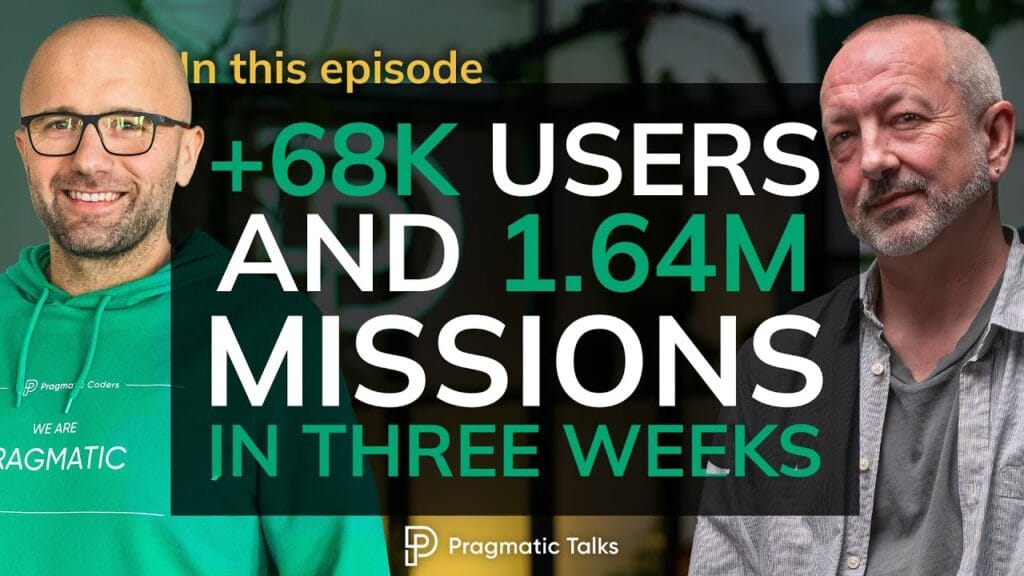New Product Development Mistakes You Should Avoid

New product development is a huge endeavor. Especially when you bear in mind that only about 20% of them succeed. There is no simple recipe for success, however, you can always learn from others’ mistakes. This is exactly what we are going to do in this blog post. We are going to show you 6 new product development mistakes. What do you say? Six pitfalls less on your bumpy enough road to success.
Lack of product market fit
You’ve heard about this a hundred times? Very well. Just listen once more. This is indeed the number one reason new products fail. There is no stressing this enough. Whatever it is you’re building you are eventually going to sell it to somebody. You’d better make sure that real people interested in your product do exist.
We’ve already written a lot about the need for validation, the reasons behind it, and ways to do it in this text: How To Create a Product Development Strategy – Step by Step. You are very welcome to make use of this guide. However, if you don’t feel like reading another long post, here comes the summary.
No magic, just research
It’s the XXI century and magic was replaced by technology. Hence you don’t build your product in secret and take it out of your magic hat to your amazed audience shouting “aaahhh”. We know this vision is alluring, but this is not how it works. Instead, you rely on market research before even starting the Act of Creation. What comes next is that you build features one by one and test them with your customers. And finally, when you are ready to launch you might expect the amazed audience. Or at least, this is what you hope for. We are sorry, no magic – just plain, hard work.
Following the description above increases your chances for success. There might be no magic in it, but there might be a pot of gold at the end of this path. And the chances that the road ends in a cliff also become significantly smaller. And trust us on this, we’ve seen too many entrepreneurs fall off that cliff.
No MVP – I want it all and I want it now approach
We hope that we’ve got the part about validating your Big Idea covered. Let’s assume it is, indeed, a good one. Are you bound to succeed? Bad news again. There is still a ton of things that can go wrong along the way.
One of those things that can easily be overlooked is defining the MVP. You know what an MVP is, right? It’s the Minimum Viable Product. It’s easy to find out what those letters stand for, but what do they actually mean?
Since “product” is rather self-explanatory we think it’s good to have a closer look at the two remaining words.
Minimum
What does “minimum” mean in terms of MVP? It means that you need to cut the scope of the project to the absolute bare minimum. Say goodbye to all the fancy features. In fact, say goodbye to as many things as you can. After all, the MINIMUM is what you’re going for. Wiktor, our co-CEO says that
if you aren’t a bit ashamed of your MVP, it means you’ve released it too late.
Viable
You do need to strive for “minimum”, but beware not to go too far. Keep the “viable” part in mind as well. Your MVP needs to satisfy customers’ needs. It must be usable, good looking, reliable, and deliver value.
Having said that, it is clear that finding balance between minimum and viable is not at all an easy task. Luckily, you are neither the first nor the last one to face this challenge. That’s why there are tools designed to help you with the process. We are particularly fond of the MoSCoW method (and it’s not only due to its fancy name).
Not striking this balance right might be a big and costly mistake. Remember, you are not in preschool. Throwing a tantrum over things you want to have in this precise moment doesn’t suit you anymore.
Do-it-myself approach
This mistake can manifest itself in a few different ways. However, its underlying cause is a lack of trust. We understand that your developing company is your dream coming true. We understand that the product is your great idea and you know everything best. But, wait, do you?
Sooner or later you need to start sharing responsibility. From our experience, the sooner you do it, the better. Sure, you need to choose your business partners carefully. However, when you make up your mind, you need to trust them fully.

In-house or outsourcing
It might be tempting to hire a freelancer and build everything in-house. Still, when you think of a successful company, is this really what you imagine? A micromanaged freelancer?
Ok, we exaggerated on purpose. A micromanaged freelancer is not something you can be proud of. Obviously. But, the killer in-house development team? That’s quite an achievement. As much as we agree with this, we need to ask a disturbing question. Have you considered the costs of building such a team? Spoiler alert: there are costs, and they are significant.
On the other hand, though, we bet you did consider the cost of hiring an agency. And we do know there are costs, and they might, but do not have to be, significant. Still, there is value to this money. How to choose a software development agency? The team of experienced engineers may be capable of doing things you would never imagine were possible. Think: going to production in 3 months.
Cooperation is a key.
Summing things up, having an in-house team of developers is certainly something that is worth considering at some point. Still, starting off by building one is not always a good solution. Finding right and experienced partners can save you a lot of money, stress, and thinking. Just keep in mind that price is not the best criterion here. You need to look for partners, not contractors. Bear in mind, though, you need to fully trust them. After all, you chose them because of their experience, right?
Similarly to the process of market validation, you need to be open to criticism. You know everything about your vision (after all, it’s yours), when you find partners that know how to make it come true you are bound to succeed. It’s a win-win situation. If everything goes well, both you and your partners will benefit from it.
Losing control over time and budget
Building a new product is fun and engaging. It’s easy to get lost in it, especially when you are in a position where you don’t need to worry about money.
The icon of this potential mistake is the infamous Fyre Festival. Do you think it’s a bit too much? We believe that when you look at problems through the magnifying glass, you can see them more clearly. Let’s assume Fyre was not a planned fraud from the very beginning. What went wrong, then?

The fun of building and the million dollar lawsuit
The founders had all the money they could imagine. There was a problem with the time frame, but that could be handled by postponing the event. Anyway, instead of thinking of the strategy for making money out of their endeavor, they concentrated on marketing and building an audience. So far, so good. What they forgot about was their product. It seems that they completely lost track of time and spendings. Sure, not every product includes partying with top models as viable work. Still, even without this particular activity, there is a lot of fun in building things. Coming back to the Fyre founders, when they realized they needed to buckle up, it was way too late to fix things. The result was the most spectacular startup failure of all time (and a million-dollar lawsuit, but that’s a different story).
Set your goals right
What we are trying to tell you here, is that even when you get your funding (or especially then) you need to focus on your product. Set goals that are time-bound. Keep track of the budget. Resist the temptation of postponing the launch and overspending. At the end of the day, you want to make money, not burn it. Are we correct?
No marketing budget
When I am done building my product I am going to release it to the public and everyone will go crazy about it. Is this what you are thinking? If the answer is “yes” – think again. Aren’t you forgetting something? That’s right, you need to let the public know there’s new something to be crazy about. How do you do it? You need marketing.

None
You have to remember about marketing. Fullstop. Not thinking about marketing or not having a marketing budget is a huge mistake. In fact, we wanted to start this paragraph by giving you an example of a company which did succeed without any marketing and argue that they are an exception. Guess, what happened when we googled something along the line of “What is the successful company that doesn’t do any marketing?”. We got the simple one-word answer – “NONE”.
Make money
In today’s world marketing does not mean running TV commercials. It can mean virtually anything. Giving free samples, having a 100% refund policy, having strong brand identification, sponsoring brand-related events, having a strong online presence – the list can go on and on like this. Anything that eventually leads to the boost in sales of your product (or service) can be considered marketing. For startups with low budgets, we especially recommend Digital Marketing, Guerilla Marketing, and Growth Hacking – you can learn more here.
In the view of the above, having no marketing strategy and/or budget must seem unreasonable. After all, what you want to do is make money, right? It’s what the business is for. Having no idea how to get to this point seems at least odd.
Make plans
Also, it is good to think about marketing from the very beginning. Maybe it’s a good idea to start building anticipation and audience even before the launch. There is an additional benefit of spreading the news before the product is ready. It is a very good way to protect yourself from the situation we mentioned in the fourth section. You simply cannot work on building your product for too long when you have customers waiting for it.
Lack of planning for after the launch
“Hope for the best. Expect the worst” – this is what they say. Those are wise words indeed, no doubt about it. However, this quotation only covers hopes and expectations. It doesn’t mention plans. And let’s face it, having a startup is all about planning.
Plan for the best. plan for the worst.
We are not sure whether the above is going to become a popular quote. It’s wise though. Or at least we believe it is. You start the business. It’s obvious you want it to be a huge success. It’s also obvious that you probably have your plan B in case it doesn’t. The question is: do you have plan A in case it does?
The launch is the moment you wait for. All your struggles and efforts concentrate on getting your product to the market. But what happens when you do? What happens on the day after the launch? Have you thought it through? Do you plan for scaling? Have you calculated the costs of day-to-day operations? Those are important questions you should ask yourself.
We know you have to do a lot of thinking on a daily basis. Anyway, we believe that asking the questions above should be a pleasant exercise. After all, you have a legitimate reason to imagine yourself as a successful entrepreneur.
Embrace the failure
Building a new product is not an easy task. There is no map or a step by step guidebook on how to do it right. You can treat this text as a kind of a pirate treasure map. You know what’s the treasure. We highlighted the biggest dangers on the way to get to it. We can share our experience, it’s your call what you do with it. But there is one more thing we want you to remember from this text. Don’t be afraid of failure. Embrace it. Learn from it and build on it the next time.

<h2>Tl;dr
- Validate your idea with the market.
- KISS* your MVP. (*keep it simple, Stupid)
- Find the right business partners.
- Keep track of time and money.
- Plan your marketing.
- Plan your success.
- Watch our co-CEO’s webinar for more in-depth advice.







